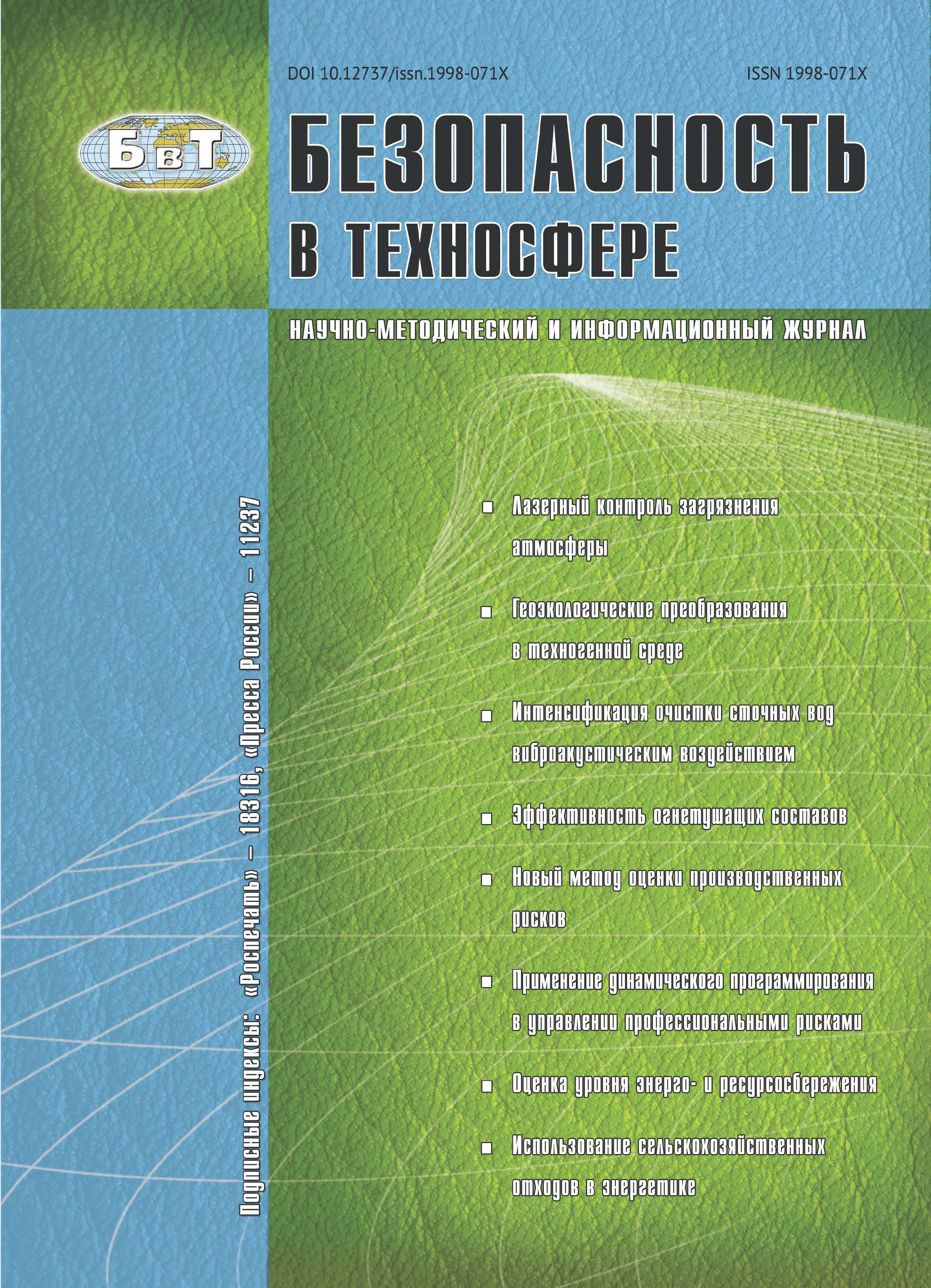Moskva, Moscow, Russian Federation
One of water ecosystems’ main components is heterotrophic bacterial plankton, carrying out processes of organic substance destruction that provides water ecosystems self-cleaning. The tasks facing modern environmental monitoring of water ecosystems demand the account not only the total number and number of separate physiological groups of bacteria, but also determination of quantity for microorganisms which are actively functioning during this time period. Now it is obvious that the results of bacterial plankton number and biomass determination received by direct account’s traditional methods don’t reflect quantity of the microorganisms which are really functioning and participating in biogeochemical cycles. The methods allowing carry out such researches based on use of special fluorescent dyes which are used as biochemical markers of various physiological processes proceeding in a bacterial cage. Results for application of a method for accounting of bacterial cages with active metabolism for marine and fresh-water ecosystems’ environmental monitoring have been presented. This method has been applied at researches of the microbial population in river, lake, estuarial, shelf marine ecosystems, and also in deepwater sea hollows for the purpose of actively functioning bacteria’ number determination. Respiratory activity markers use has shown that only an insignificant share (generally from 0.1 to 30 %, and in some cases — to 90 % of cages in the bacterial plankton’s total number) possesses the active metabolism and provides processes of organic substance destruction in water ecosystems. The received results testify to prospects for application of this microbiological method within environmental monitoring of water ecosystems for accounting of the bacterial plankton possessing active metabolism.
microbiological methods, environmental monitoring, bacterial plankton, bacterial cages with active metabolism, microbiological parameters, fresh-water ecosystems, marine ecosystems
Введение
Современный технический прогресс вызывает стремительные изменения в состоянии окружающей среды, приводит к формированию техносферы. С учетом нарастающего воздействия деятельности человека на биосферу особое значение приобретают постоянный контроль и мониторинг состояния окружающей среды, ее отдельных компонентов и динамики происходящих в экосистеме изменений.
Для оценки и контроля этих изменений применяется система экологического мониторинга. Одной из ее задач является оценка состояния основных компонентов экосистем. Гетеротрофный бактериопланктон является важным компонентом водных экосистем, осуществляющий процессы деструкции органического вещества, что обеспечивает самоочищение водных экосистем. Значительная численность бактериопланктона и ряд особенностей его метаболизма — высокая скорость размножения, способность к деструкции органического вещества, а со временем и к полной утилизации не только практически всех известных природных органических соединений, но и многих веществ антропогенного происхождения, — обусловливают исключительно важную функцию бактерий в биогеохимических циклах элементов и процессах самоочищения, протекающих в водоемах.
1. Sherr B., Sherr E., del Giorgio P. Enumeration of total and highly active bacteria / Methods in Microbiology / Marine Microbiology V. 30 / Ed. John H. Paul, Academic Press. 2001. P. 129-160.
2. Sherr B. F., del Giorgio P. A., Sherr E. B. Estimating abundance and single-cell characteristics of respiring bacteria via the redox dye CTC. Aquat Microb Ecol. 1999. V.18. P. 117-131.
3. Metodicheskie osnovy kompleksnogo ekologicheskogo monitoringa okeana / Pod red. A. V. Tsyban´. M.: Gidrometeoizdat, 1988.
4. Il´inskiy, V. V. Geterotrofnyy bakterioplankton / Prakticheskaya gidrobiologiya: Ucheb. dlya stud. biol. spets. universitetov pod red. Fedorova V. D. i Kapkova V. I. M.: PIM, 2006. S. 331-365.
5. Methods in Stream Ecology / Ed. Hauer F. R., Lamberti G. A. Elsevier. 2006. p. 876.
6. del Giorgio P. A., Scarborough G. Increase in the proportion of metabolically active bacteria along gradients of enrichment in freshwater and marine plankton: implication for estimates of bacterial growth and production rates. J. of Plankton Research. 1995. V. 17. № 10. P. 1905-1924.
7. Mosharova I. V., Il´inskiy V. V., Matorin D. N., Mosharov S. A., Akulova A. Yu., Protopopov F. A. Monitoring vod reki Moskvy s pomoshch´yu mikrobiologicheskikh parametrov i fluorestsentsii khlorofilla a.. Mikrobiologiya. 2015. T. 84. № 6. S. 712-724.
8. Il´inskiy V. V., Mosharova I. V., Akulova A. Yu., Mosharov S. A. Sovremennoe sostoyanie geterotrofnogo bakterioplanktona Kosinskogo Trekhozer´ya. Vodnye resursy. 2013. T. 40. № 5. S. 477-487.
9. Akulova A. Yu., Il´inskiy V. V., Mosharova I. V., Moskvina M. I., Mosharov S. A., Komarova T. I. Sostoyanie geterotrofnogo bakterioplanktona pribrezh´ya ozer Svyatoe i Beloe prirodno-istoricheskogo parka «Kosinskiy» (gorod Moskva) v 2011 godu. Izvestiya Samarskogo nauchnogo tsentra RAN. 2014. T. 16. № 1. s. 1185-1192.
10. Mosharova I. V., Il´inskiy V. V., Mosharov S. A. Sostoyanie geterotrofnogo bakterioplanktona estuariya reki Enisey i zony Ob´-Eniseyskogo rechnogo vynosa v osenniy period v svyazi s faktorami sredy. Vodnye resursy. 2016. T. 43. № 2. C. 202-215.
11. Mosharova I. V., Mosharov S. A., Il´inskiy V. V. Osobennosti rasprostraneniya bakterioplanktona s aktivnym metabolizmom v vodnoy tolshche zheloba Svyatoy Anny v Karskom more v osenniy period 2011 g.. Okeanologiya. 2017. T. 57. № 1. S. 1-9.
12. Sommaruga R., Conde D. Seasonal variability of metabolically active bacterioplankton in the euphotic zone of a hypertrophic lake. Aquat Microb Ecol. 1997. V.13. P. 241-248.






